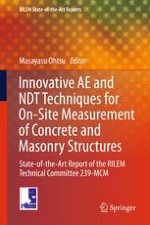The research and its outcomes presented in this book treat applications of NDT techniques to on-site measurements. These on-site measurements have been marginally successful as each technique requires a particular analysis. In this regard, visualization and imaging of results are in great demand for practitioners and engineers for inspection. This volume, in which on-site measurements of concrete and masonry structures by NDT techniques are comprehensively summarized, focuses on the visualization procedure of the results measured. The book will therefore be of great value to the field.
